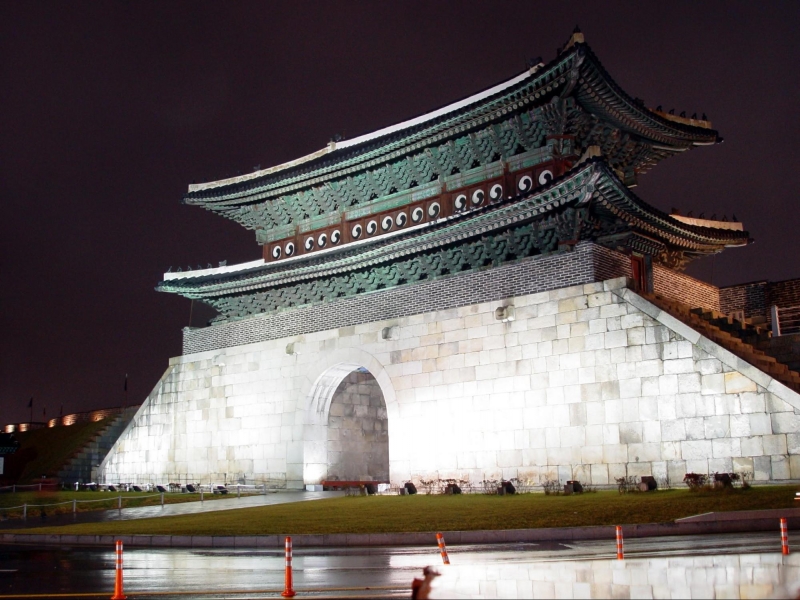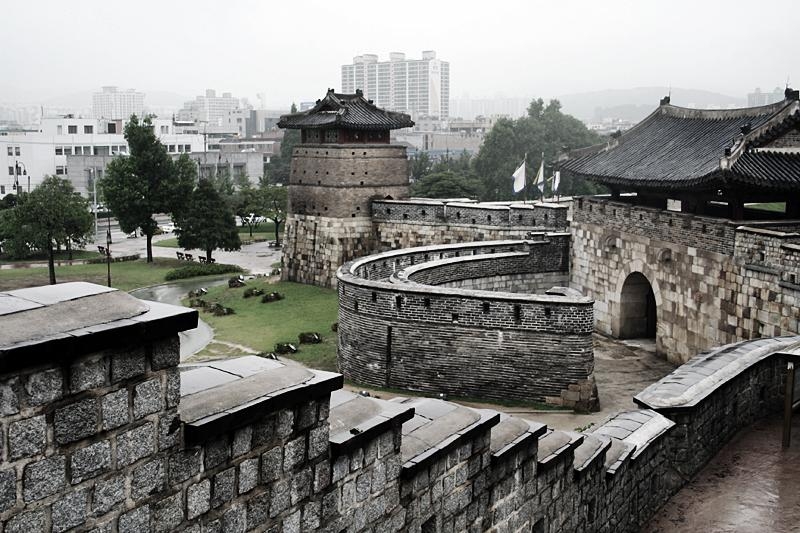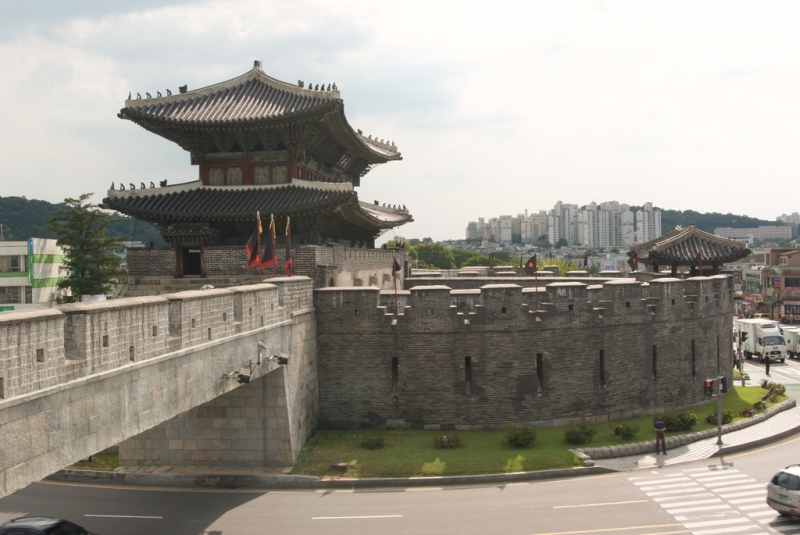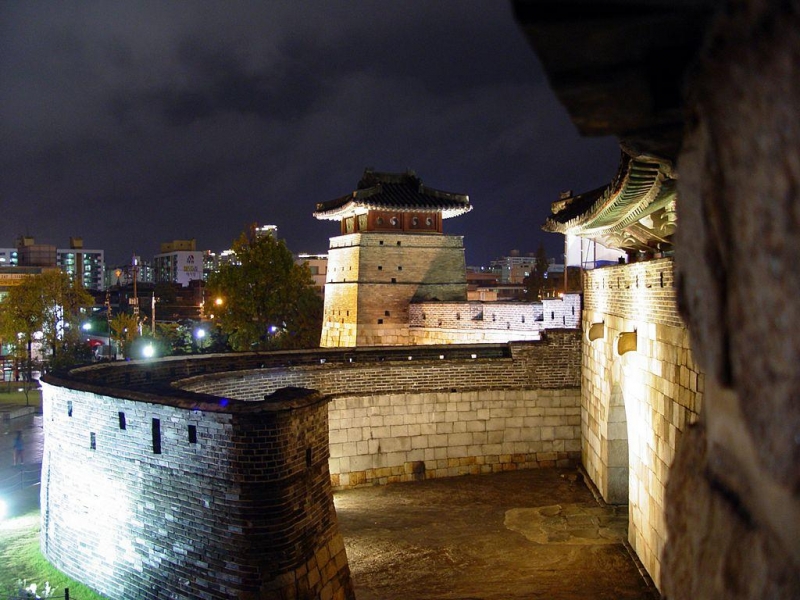Designated as a UNESCO World Heritage Site in 1997, Hwaseong is a late 18th-century historic fortress that has become a prominent tourist destination in South Korea. The fortress circles the perimeter of the city of Suwon, which is about 30 kilometres away from Seoul, and makes for an ideal day trip from the capital. I opted to get there by taking the Seoul Subway Line 1 from Seoul Station to Suwon Station, and then taking a bus directly to Hwaseong.

The fortress was constructed by King Jeongjo, 22nd ruler of the Joseon Dynasty of Korea and traditionally regarded as a very strong leader, between 1794 and 1796. It was built with the intention of demonstrating the king’s power, as well as paying tribute to his deceased father Crown Prince Sado who had been murdered as a result of factional tensions within the royal court and whose tomb was constructed at the foot of Mount Paldal in Suwon. Some areas of Hwaseong were destroyed by both wartime attacks and natural disasters, but a major reconstruction effort was undertaken from 1975 onwards. A document bearing the name Hwaseong Seongyeokuigwe, meaning “Records of Hwaseong Fortress Construction”, was published a few short years after the fortress was completed and this paper served as the basis for the reconstruction project.

Hwaseong is considered to be one of the great epochs of Korean architecture, drawing influence from both Asian and Western traditions to create one of the most impressive structures yet seen in the region. The Suwoncheon River flows straight through the fortress, and there are two floodgates which remain in operation at both ends of the complex; one letting the water flow in and the other letting it flow out. I was surprised by just how large the fortress is, encompassing an area of 130 hectares with a circumference of 5,744 metres, and it took me more than two hours to walk around all of it.
Upon first approaching Hwaseong, the feature that stood out to me the most are the imposing thick brick walls which offer a clear display of the defensive capabilities of the fortress. I immediately thought they bore a striking resemblance to the walls of medieval European castles. There were originally four main gates that provided entry into the fortress, though in modern times more entrances have been added. These gates were the Paldalmun in the south, the Janganmun in the north, the Changnyongmun in the east and the Hwaseomun in the west.

The Paldalmun and Janganmun Gates are linked via a main road that runs through the heart of the complex. As I walked around the fortress I was able to see a plethora of towers which were used for a wide variety of defensive purposes; from watchtowers and sentry posts to towers built for archers to fire their arrows at any prospective attackers. Bongdon, the Beacon Tower, was used to display smoke signals to the king in case of an emergency. There is a small Buddhist temple with a beautiful golden Buddha statue nestled away on the grounds too. Of the original 48 facilities present in Hwaseong, 41 remain intact today. The western part of the fortress, where the elevation is highest, offers an excellent view of the city of Suwon especially at dusk when the buildings are illuminated.

There is also a Hwaseong Museum, whose admission is included in the entry price of 1,000 KRW to the fortress. Historical artifacts and detailed accounts retelling how the fortress came to be are on display here. I concluded my visit by going to the Hwaseong Haenggung, which was a palace constructed for King Jeongjo to reside in when he visited the nearby tomb of his father. Nearby is Hyowon’s Bell, a giant bell created to honour the king’s father. Visitors are encouraged to ring it themselves to show reverence for their own parents.
Finally, I would strongly urge you to check out the nearby Suwon Yeongdong and Motgol Markets and sample some of the delicious local food! The contrast between the centuries old fortress and the modern city is truly profound and makes for a very memorable day out.





